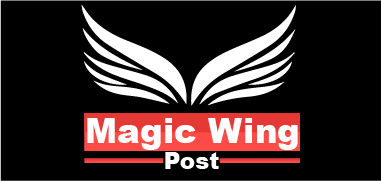When comparing the United States and Canada, it becomes evident that their approaches to education, healthcare, and overall quality of life diverge in significant ways. These differences shape the experiences and well-being of their respective populations, making a comparative analysis crucial for understanding societal outcomes and policy impacts.
Tables and lists:
| Aspect | United States | Canada |
|---|---|---|
| Education System | Decentralized; varies by state; local funding | Centralized; provincially managed; government-funded |
| Academic Performance | Mixed performance; challenges with equity and funding disparities | Strong performance; higher rankings in international assessments |
| Accessibility | Varies widely; affordability issues for higher education | Generally accessible; public education up to secondary level free |
| Healthcare System | Multi-payer system; private and public insurance options | Single-payer system (Medicare); universal healthcare coverage |
| Coverage and Access | Significant uninsured population; access issues | Universal healthcare coverage; equitable access to medical services |
| Quality of Care | High quality but disparities; advanced medical technology | High-quality primary care; lower administrative costs |
| Cost and Affordability | High healthcare costs; significant financial burden | Lower per capita healthcare spending; publicly funded system |
Education System Comparison
Structure and Funding
The education system in the United States is highly decentralized, with each state responsible for setting its standards and allocating funding. This results in considerable variation in resources and educational quality across the country. Conversely, Canada adopts a more centralized approach, with provinces overseeing education policies and funding. This centralized structure often leads to more uniformity in educational standards and resource allocation compared to the United States.
Academic Performance and Rankings
When assessing academic performance, Canadian students tend to outperform their American counterparts in international assessments of mathematics, science, and reading proficiency. This superior performance is attributed to Canada’s robust public education system, which emphasizes equitable access to quality education and comprehensive curriculum standards. In contrast, the United States faces challenges related to funding disparities, teacher shortages, and varying curriculum standards, contributing to disparities in academic outcomes.
Accessibility and Affordability
Education accessibility and affordability also differ significantly between the two nations. In Canada, public education up to the secondary level is typically free or carries minimal costs, supported by government funding. This accessibility extends to post-secondary education, where tuition fees are generally lower compared to the United States, fostering higher rates of educational attainment among Canadians. Conversely, higher education in the United States is often associated with substantial costs, including tuition fees and student loan debt, which can limit access and affordability for many students.
Healthcare System Comparison
Coverage and Access
The healthcare systems of the United States and Canada reflect contrasting approaches to coverage and access. In Canada, healthcare is publicly funded and delivered through a single-payer system, known as Medicare. This system provides universal coverage for essential medical services to all Canadian citizens and permanent residents, ensuring equitable access to healthcare regardless of income or employment status.
In contrast, the United States utilizes a multi-payer healthcare system, where healthcare coverage is often provided through private insurance companies, employer-sponsored plans, or government programs like Medicare and Medicaid. Despite efforts to expand coverage through the Affordable Care Act (ACA), significant portions of the population remain uninsured or underinsured, impacting access to necessary medical services.
Quality of Care
Quality of healthcare in both countries varies based on factors such as funding, infrastructure, and healthcare provider availability. Canadian healthcare is generally praised for its high-quality primary care services and lower administrative costs compared to the United States. However, wait times for certain elective procedures and specialist appointments can be longer in Canada due to resource constraints within the public system.
In the United States, healthcare quality is influenced by the availability of advanced medical technologies, specialized treatments, and a competitive healthcare market. While Americans often have shorter wait times for medical procedures compared to Canadians, disparities in healthcare access and outcomes persist, particularly among marginalized communities and those without adequate insurance coverage.
Cost and Affordability
Costs associated with healthcare represent a significant divergence between the two countries. Canada’s single-payer system controls healthcare expenditures through negotiated pricing and bulk purchasing of pharmaceuticals and medical supplies. This approach results in lower per capita healthcare spending compared to the United States, where healthcare costs are among the highest globally.
Conversely, healthcare in the United States is characterized by high costs driven by factors such as administrative expenses, pharmaceutical prices, and the fee-for-service payment model. Despite spending more per capita on healthcare, millions of Americans face financial barriers to accessing essential medical services, leading to disparities in health outcomes and economic stability.
Quality of Life Metrics
Economic Factors (Income, Cost of Living)
Economic factors play a crucial role in shaping the quality of life in both the United States and Canada. The United States boasts a larger GDP per capita compared to Canada, reflecting its status as the world’s largest economy. This economic strength translates into higher average incomes and greater opportunities for wealth accumulation among Americans.
However, the cost of living in the United States can vary significantly depending on location, with major cities often experiencing higher housing costs and living expenses. In contrast, Canada maintains a more balanced cost of living across its provinces, with some regions offering more affordable housing and consumer goods compared to their American counterparts.
Social Factors (Crime Rate, Community Engagement)
Social factors contribute significantly to quality of life outcomes in both countries. Canada generally experiences lower crime rates compared to the United States, attributed in part to stricter gun control laws and social welfare programs that address poverty and inequality. Community engagement and social cohesion are also prioritized in Canadian society, fostering a sense of belonging and support among residents.
In contrast, the United States contends with higher crime rates in certain urban areas and challenges related to socioeconomic disparities. While community engagement varies across different regions and demographics, initiatives promoting civic participation and social integration continue to play a crucial role in enhancing quality of life outcomes.
Environmental Factors (Air Quality, Natural Resources)
Environmental considerations contribute to overall quality of life by influencing health outcomes and ecosystem sustainability. Both the United States and Canada prioritize environmental protection and conservation efforts, but challenges such as air pollution and resource extraction practices vary between the two nations.
Canada benefits from abundant natural resources and vast wilderness areas, contributing to cleaner air quality in many regions compared to densely populated areas of the United States. Sustainable resource management and conservation initiatives play a vital role in preserving Canada’s environmental integrity and supporting eco-tourism and outdoor recreation opportunities.
In contrast, the United States faces ongoing challenges related to air pollution in urban centers and debates surrounding natural resource extraction methods like fracking and oil sands development. Efforts to mitigate environmental impacts through regulatory measures and community-driven sustainability initiatives are essential to safeguarding public health and natural ecosystems.
Cultural Differences and Social Welfare
Diversity and Inclusivity
Both the United States and Canada are diverse nations, but they approach cultural diversity and inclusivity differently. The United States prides itself on being a melting pot of cultures, with a long history of immigration contributing to its cultural richness. Diversity in the U.S. is celebrated through cultural festivals, ethnic neighborhoods, and a variety of religious and linguistic communities.
Canada also values diversity and inclusivity, emphasizing multiculturalism as a fundamental aspect of its national identity. Policies promoting multiculturalism aim to preserve and celebrate cultural heritage while promoting equality and social cohesion. Canada’s approach to immigration and refugee resettlement reflects its commitment to diversity, with initiatives to support integration and inclusivity across communities Read More Here from previous Blogs World Wide Technology Soccer Park.
Social Welfare Programs
Social welfare programs in Canada and the United States play a crucial role in supporting vulnerable populations and promoting social equity. Canada’s social safety net includes universal healthcare, public pensions, unemployment insurance, and childcare subsidies, aimed at reducing poverty and enhancing quality of life for all residents.
In contrast, the United States maintains a more fragmented social welfare system, with programs like Social Security, Medicare, and Medicaid providing essential support to seniors, low-income individuals, and people with disabilities. However, gaps in coverage and eligibility criteria can leave many Americans without adequate social protections, contributing to disparities in health outcomes and economic stability.
Conclusion
In conclusion, comparing the United States and Canada across education, healthcare, and quality of life reveals distinct policy approaches and societal outcomes. Canada’s emphasis on universal healthcare and social welfare contributes to higher levels of public trust and well-being, while the United States navigates challenges related to healthcare access and economic disparities.
Economically, the United States leads in GDP per capita but faces higher costs of living and healthcare expenditures compared to Canada. Socially, Canada benefits from lower crime rates and strong community engagement, supported by policies promoting inclusivity and multiculturalism.
Environmental stewardship and natural resource management remain priorities for both nations, with Canada leveraging its vast landscapes and environmental regulations to preserve air quality and biodiversity.






